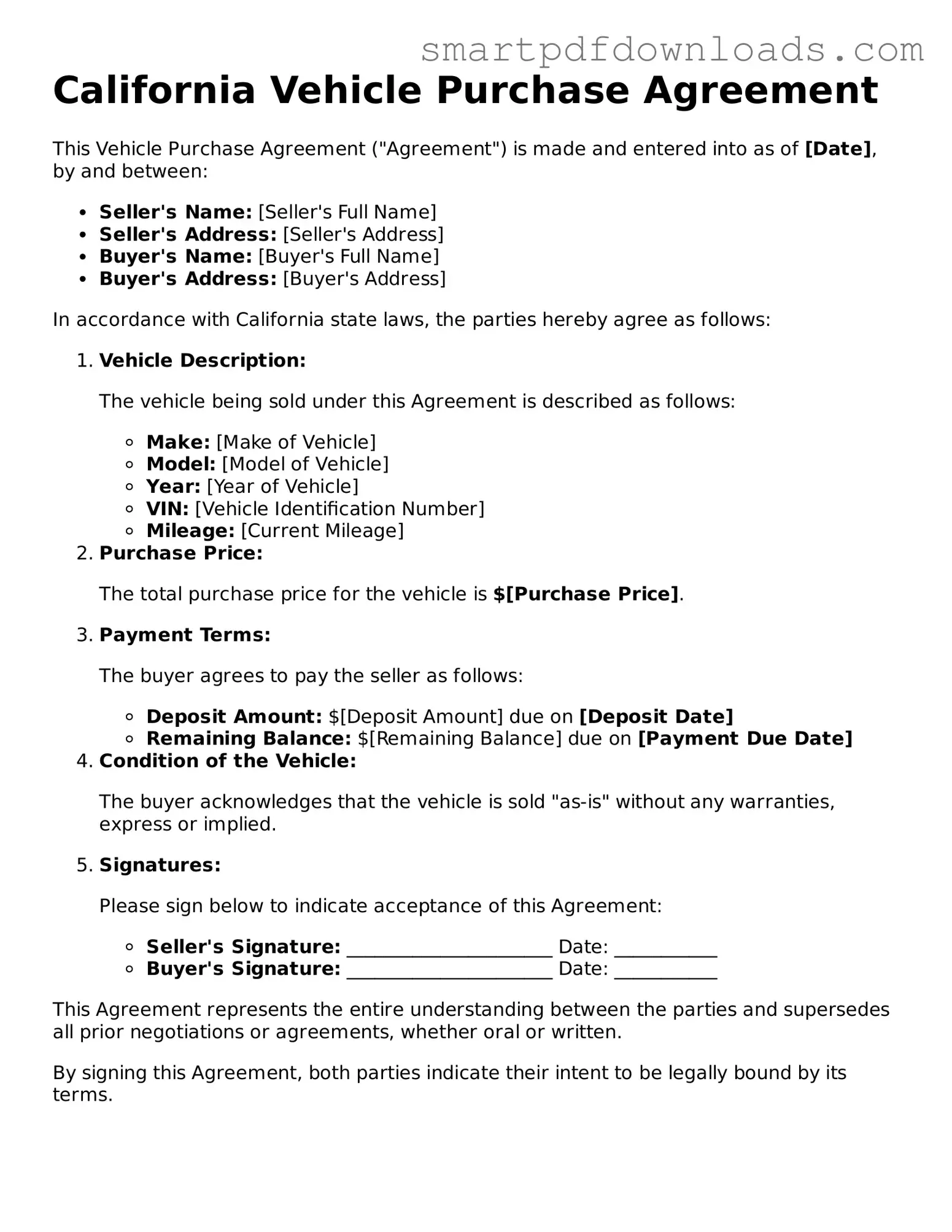California Vehicle Purchase Agreement
This Vehicle Purchase Agreement ("Agreement") is made and entered into as of [Date], by and between:
- Seller's Name: [Seller's Full Name]
- Seller's Address: [Seller's Address]
- Buyer's Name: [Buyer's Full Name]
- Buyer's Address: [Buyer's Address]
In accordance with California state laws, the parties hereby agree as follows:
- Vehicle Description:
The vehicle being sold under this Agreement is described as follows:
- Make: [Make of Vehicle]
- Model: [Model of Vehicle]
- Year: [Year of Vehicle]
- VIN: [Vehicle Identification Number]
- Mileage: [Current Mileage]
- Purchase Price:
The total purchase price for the vehicle is $[Purchase Price].
- Payment Terms:
The buyer agrees to pay the seller as follows:
- Deposit Amount: $[Deposit Amount] due on [Deposit Date]
- Remaining Balance: $[Remaining Balance] due on [Payment Due Date]
- Condition of the Vehicle:
The buyer acknowledges that the vehicle is sold "as-is" without any warranties, express or implied.
- Signatures:
Please sign below to indicate acceptance of this Agreement:
- Seller's Signature: ______________________ Date: ___________
- Buyer's Signature: ______________________ Date: ___________
This Agreement represents the entire understanding between the parties and supersedes all prior negotiations or agreements, whether oral or written.
By signing this Agreement, both parties indicate their intent to be legally bound by its terms.
